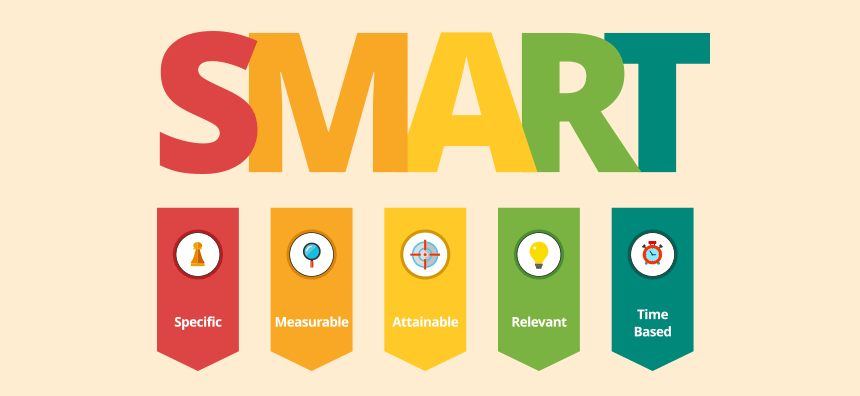Dealing with difficult clients is no fun. Not only can they make your work hours miserable, but their behavior can also take up mental space in your off-hours too … leaving you cranky, stressed out, and feeling put-upon, long after your workday has come to an end.
Fortunately, there is hope–once you know how to handle these demanding individuals. To help you accomplish that, we’ve identified the 10 most common types of difficult clients you’re likely to run into and what to do when you encounter one of them.

How to Manage 10 Types of Difficult Clients
1. “Always an Emergency” Edward
To an “Always an Emergency” Edward, every project is critical and needs to be completed yesterday. This client expects to be your top priority 100% of the time, even though he’s well aware you have other clients.
While “Always an Emergency” Edwards are challenging, the good news is that there is a solution, and that is not to overpromise. Instead, only agree to what you can reasonably deliver.
If you don’t, the Edwards of the world will continue to expect you to work weekends and late into the evening tending to their last-minute “emergencies” forevermore.
However, after you start setting firm boundaries and stop bending over backward to meet every last-minute request, an Edward will realize that if there’s something important he needs to have done, he better give you more notice upfront … and guaranteed, once he grasps that an emergency on his part doesn’t constitute an emergency on yours, he’ll do a much better job anticipating his work needs.
2. Penny-Pinching Paula
Penny-Pinching Paulas are on a tight budget and have little financial breathing room, should the project’s cost exceed their expectations … which is why when you encounter a penny pincher, you’ll want to be very clear about the scope of the project, as well as its cost.
For instance, if you’re doing hourly work for a Penny-Pinching Paula, give an estimate on the higher end, so she has a full understanding of what the work could potentially cost her.
If the project’s a large one that’s more challenging to estimate, consider breaking it down into milestones and estimating your effort per milestone.
By contrast, if you’re doing fixed-price work for a penny pincher, make sure you’re very clear about what they’ll get for their money before you even start work–for instance, two revisions, rather than endless revisions until they’re completely satisfied.
Bottom Line? While you can’t do anything to improve a Penny-Pinching Paula’s budget, you can provide her with a realistic idea of what the project’s likely to cost, while making sure she doesn’t tack on extras that are outside the scope of the project.

3. “Not This” Nate
A “Not This” Nate can’t tell you what he wants, he only knows that he doesn’t like what you delivered–a scenario that’s especially frustrating when you put a lot of time and effort into producing great work.
Worse, when you get a “Not This” Nate’s negative feedback, you often have no idea what direction to go in next. If he didn’t like work you were really proud of, what will he like?
The solution to working with a “Not This” Nate is to ask for examples of work that he does like, and then put your detective cap on by asking questions, like, “What is it about this work that you appreciate?” and “In what ways would you like the work I create for you to be similar?”
By asking the right questions, you can get a better sense of what your client is looking for and modify the work to their liking. However, if you still can’t get on the same page, there is some good news.
A “Not This” Nate will often assume you’re the problem, rather than his own lack of clarity. So, if you really struggle to make a Nate happy, he probably isn’t going to rehire you, freeing up your time to work with better, easier clients!
4. “Scope Creep” Sally
A “Scope Creep” Sally tries to maximize the amount of work she gets out of you by continually adding extras to her initial project request–which is aggravating enough on its own, but even more so if you’re working for a fixed-price or have a tight turnaround.
The best way to deal with a “Scope Creep” Sally is to detail specifically in writing what the project deliverables are and which items are out of scope, so there’s no confusion.
You also want to make it clear to a Sally that should the scope be revised after you’ve already started the project, there’ll be additional costs and a revised timeline.

5. Airhead Al
An Airhead Al has his head in the clouds. Perhaps he’s juggling too many projects or maybe he’s just organizationally challenged, but whatever the reason, Airhead Al doesn’t give you critical information.
For instance, a client like this might hire you to design a landing page and tell you there’s no deadline, but then two weeks later mention that the page needs to be finished right away because oops, he forgot to mention that it’s for his webinar… which is next week.
While you can’t cure clients of their flightiness, you can head off frustration by making sure you never assume anything when you’re dealing with them. So, pin an Airhead Al down, ask questions, request more detail–in short, never surmise that you have all the key information.
Although Airhead Als might not remember to share important details on their own, you can typically uncover all the relevant information by asking good follow-up questions.
6. “It Won’t Take Long” Laura
If you’ve been dealing with clients for a while, you’ve probably already come across an “It Won’t Take Long” Laura. You know the type … this is the client who tries to convince you that a project won’t take very long at all–when you happen to know otherwise.
In cases like these, it’s best to stick to your guns (i.e., your original estimate), rather than to agree to something you suspect you won’t be able to accomplish. After all, it’s far better to be honest about what you believe is involved than to later look unprofessional, because you agreed to a cost (or deadline) that you couldn’t meet.
You can always tell a Laura that if you start the work and find that it’s taking less time than anticipated, you’ll let her know, but otherwise, your estimate stands firm.

7. “Forget the Feedback” Fred
A “Forget the Feedback” Fred isn’t open to your suggestions–even in cases where he hired you for the very expertise you’re providing! In short, he wants things done in a certain way … a way that you don’t think is in the best interest of his business.
When confronted with this type of client, it’s important not to take things personally. Instead, explain why you’re making the recommendation you are in writing and elaborate on your reasoning. Then, emotionally detach from the outcome and allow your client to make his own decision.
In some cases, you might be able to change his mind, in others, you won’t. However, since the decision affects his business, it should ultimately be his call.
8. Workaholic Wendy
You know the type … a Workaholic Wendy is constantly burning the midnight oil, rarely takes a vacation, and even churns out emails on Christmas. That’s all well and good for her, but this kind of client expects the same dedication from you. Uh-uh.
The best way to handle a Workaholic Wendy is to set expectations right from the get-go. For instance, you might explain to a Wendy that your email response time is 24 hours or that you only respond to emergencies on the weekend–anything else can wait until Monday.
Additionally, you’ll want to make sure that you establish firm boundaries and stick to them. So, if you’ve already informed Workaholic Wendy that you don’t answer emails over the weekend unless they’re an emergency, do what you said you would–and wait until Monday to respond.
9. Bureaucratic Bob
Bureaucratic Bobs are all too common at large corporations. Rather than being able to make relatively simple decisions on their own, Bureaucratic Bobs need to get input from an entire committee about the latest blog post you wrote or the shade of blue you used on a graphic.
Unfortunately, Bureaucratic Bobs come with the territory when you’re working for big business. And although they may be frustrating, a lot of that frustration comes from the confusion of multiple people providing you feedback.
While you may not be able to change the bureaucracies of Bob’s workplace, you can insist on having just one contact person–someone who can act as your sole company liaison, so you don’t have multiple people providing you with direction.

10. Nitpicking Nancy
Nothing’s ever good enough for a Nitpicking Nancy. This demanding client will dissect and pick apart every little thing you do, finding even the smallest of “flaws.” Don’t worry, it’s not you–it’s them. Almost certainly their negativity predated your relationship.
The best way to deal with a Nitpicking Nancy is to avoid clients like these in the first place. So, how can you identify a Nancy? If you’re on a hiring platform, your first step is to check her feedback from other contractors.
Another telling clue is when a client asks if you provide unlimited revisions. If they have to ask, it’s usually because they already know that they’re rarely satisfied with just one or two edits.
That said, let’s say it’s too late–you’re already working for a Nitpicking Nancy, what should you do? First of all, don’t take it personally, some people just have a negative disposition that doesn’t have anything to do with you.
In which case, this is a client that’s well-worth firing, because nothing will ever be good enough for a Nitpicking Nancy. Not only will she sap your time and energy, but she’ll also leave you incredibly frustrated in the process.
Rather than deal with that, sever the relationship, so you have more time to work with the clients you do like.
































































